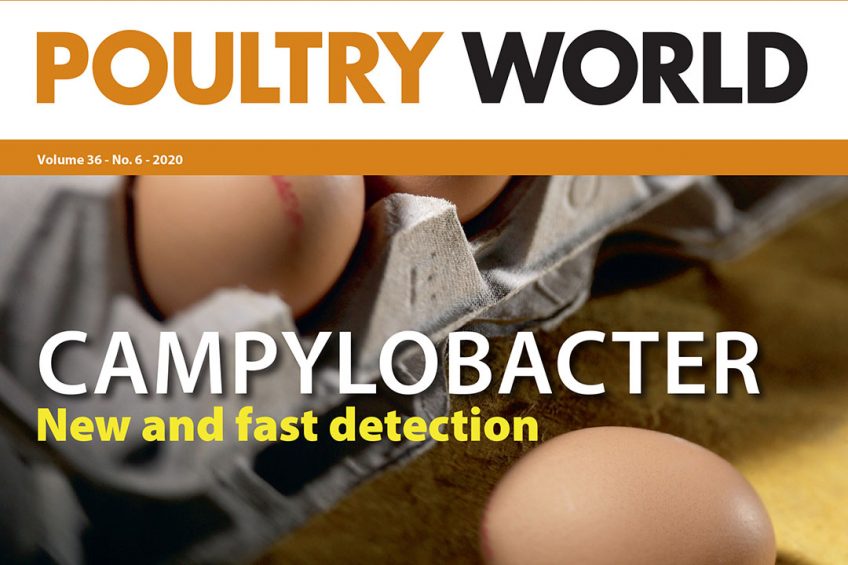Poultry World edition 6 of 2020 is now online

In this edition of Poultry World we look into a new, quick and inexpensive method to detect Campylobacter. We see how French poultry farmers on encouraging consumers to spend more money on animal-friendly meat and eggs, and we discuss how to better manage feed costs with probiotics. Furthermore, housefly larvae are under the microscope – is this a viable protein source for poultry?
View Poultry World Digital Magazine
New and fast detection of Campylobacter
The current methods that test flocks for Campylobacter take more than 4 days. Presented by an EU consortium, an inexpensive new air-sampling method – the first ever such system on the market – yields results in just 2 hours and indicate both the presence and the level. Future tests could also include sampling of Salmonella.
Welfare label ensures a premium for meat and eggs
A group of poultry farmers in France aims to encourage consumers to spend more money on animal-friendly eggs and meat. They produce poultry with 3 different welfare labels, namely organic, free-range, and the French Label Rouge.

Detecting mycotoxin lesions in slaughterhouses
It is standard practice to sample feed ingredients to test for mycotoxin contamination in feed, but Agrimprove is now taking a different approach and looks at mycotoxin lesions in slaughterhouses.

View Poultry World Digital Magazine
Managing poultry feed costs with probiotics
Recent findings indicate how probiotic bacteria enhances energy utilisation. This offers producers an additional tool to manage ration costs as energy is a major feed cost.
Housefly larvae contribute to sustainable layer nutrition
Are housefly larvae a viable protein source in sustainable layer nutrition, and could it fully replace soya at a competitive price? In this article we dig into the details.

Choosing the right metabolite matters
Poultry nutrition is complex and requires good understanding. Metabolites matter, but not all are created equal.

View Poultry World Digital Magazine
Organic trace minerals improve animal production sustainability
Organic trace elements play an important role in sustainability but also enable better quality products in line with public health regulations.

A complex battlefield: mycotoxins in the GIT
In this article we delve into the complex processes that take place when mycotoxins enter the gastrointestinal tract. This understanding highlights the cascading effects of mycotoxins on animal health and performance. But what can be done about it?

Pre-slaughter measures have knock-on effect in further processing
Water-spraying and forced ventilation during holding improves meat quality after processing. This article looks into the research.

Column: Data, analytics and evidence-based decisions are key
Mick Keyes, chief technology officer at Poultry Sense, discusses why aligned data throughout the supply chain, which can be readily analysed and interpreted, is going to be key as consumers demand greater visibility from the sector.
View Poultry World Digital Magazine
To access the magazine section, where you will find the 6th edition of Poultry World 2020 as well as other magazines from specialists in the agriculture industry, simply register for free.













